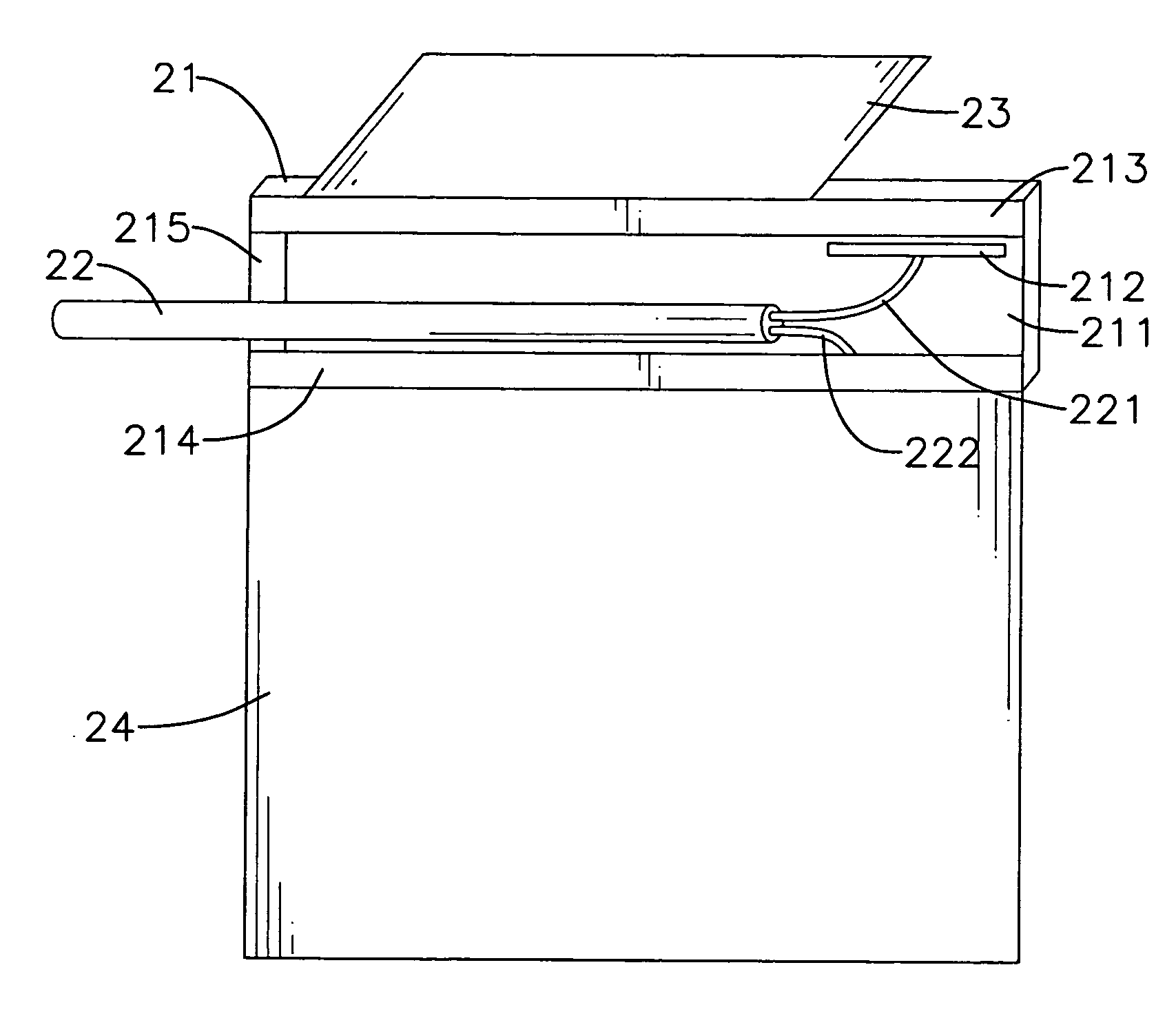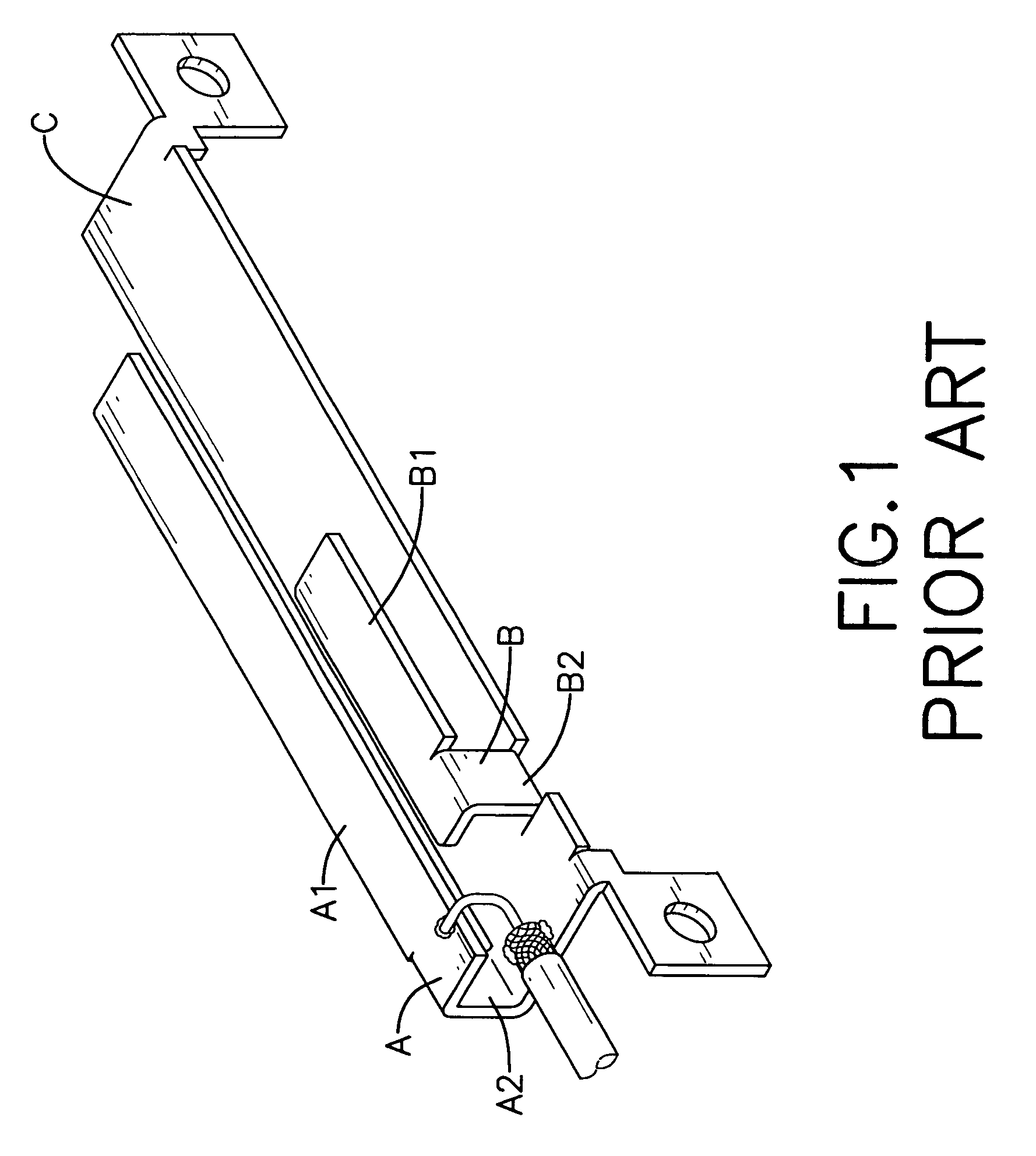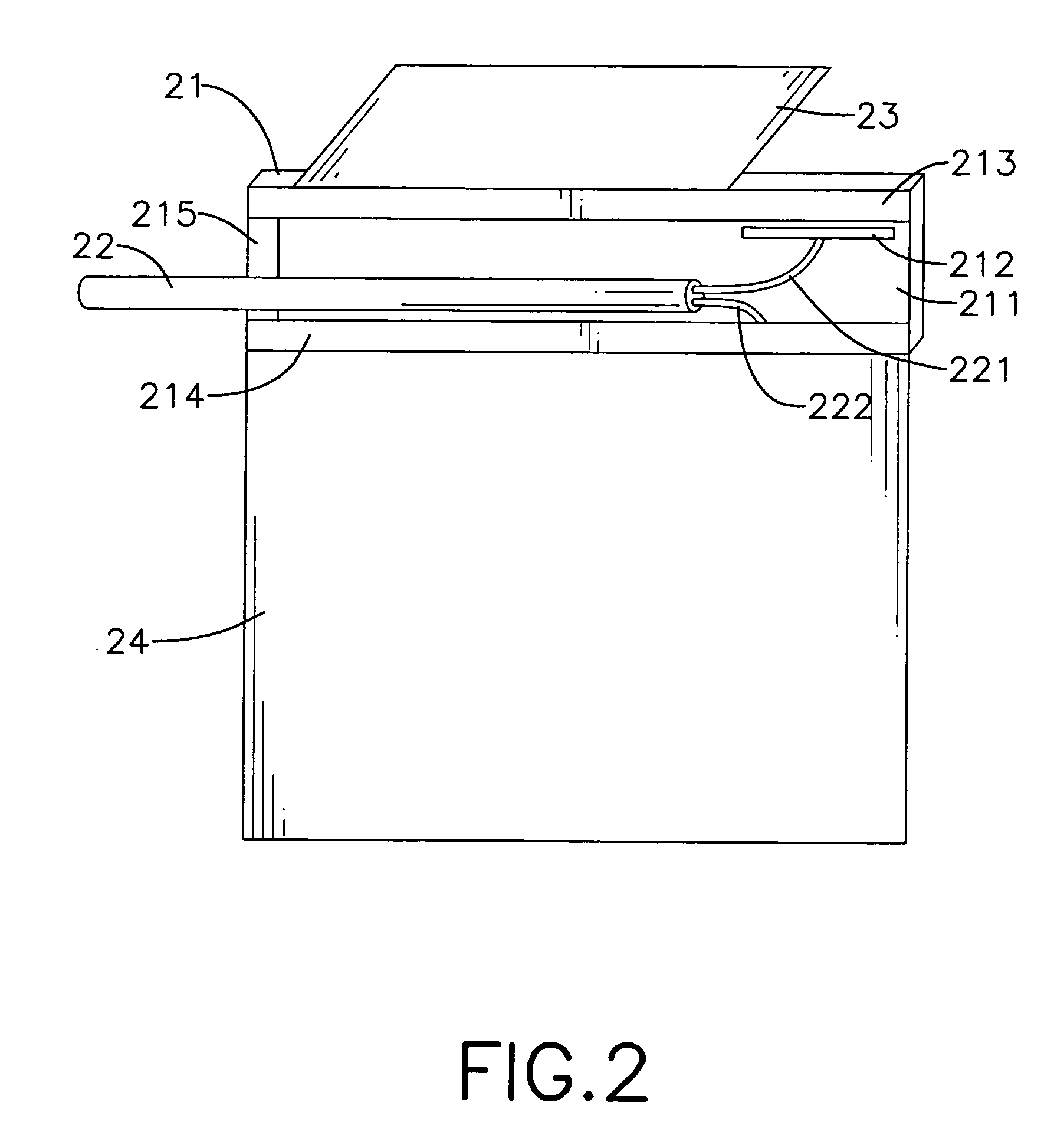Coupled multi-band antenna
a multi-band antenna and coupling technology, applied in the direction of resonant antennas, antenna earthings, radiating element structural forms, etc., can solve the problems of antennas, insufficient bandwidths in both high and low frequencies, and the first difficulty in overcoming antennas, so as to achieve good multi-band operation, smooth impedance variation, and large bandwidth
- Summary
- Abstract
- Description
- Claims
- Application Information
AI Technical Summary
Benefits of technology
Problems solved by technology
Method used
Image
Examples
first embodiment
[0021]the coupled multi-band antenna is shown in FIG. 2. The antenna includes a coupled radiator 21, a feed wire 22, a first radiating extension 23, and a second radiating extension 24. The coupled radiator 21 has a microwave substrate 211, a coupled metal element 212, a first radiating element 213, a second radiating element 214, and a connecting portion 215. The coupled metal element 212 is disposed on one surface of the microwave substrate 211. The first radiating element 213 is disposed on one surface of the microwave substrate 211 and in the vicinity of the coupled metal element 212 to form a coupled structure with a gap less than or equal to 3 mm. The second radiating element 214 is disposed on one surface of the microwave substrate 211, and its extension direction is roughly parallel to the first radiating element 213. The connecting portion 215 is disposed on one surface of the microwave substrate 211, and its both ends are connected respectively to the first radiating eleme...
second embodiment
[0023]the disclosed coupled multi-band antenna is shown in FIG. 4. It includes a coupled radiator 41, a feed wire 42, a first radiating extension 43, and a second radiating extension 44. The coupled radiator 41 has a microwave substrate 411, a coupled metal element 412, a first radiating element 413, a second radiating element 414, and a connecting portion 415. The coupled metal element 412 is disposed on one surface of the microwave substrate 411. The first radiating element 413 is disposed on one surface of the microwave substrate 411 and in the vicinity of the coupled metal element 412 to form a coupled structure with a minimal gap less than 3 mm. The second radiating element 414 is disposed on one surface of the microwave substrate 411, and its extension direction is roughly parallel to the first radiating element 413. The connecting portion 415 is disposed on one surface of the microwave substrate 411, and its both ends are connected respectively to the first radiating element ...
third embodiment
[0024]the disclosed coupled multi-band antenna is shown in FIG. 5. It includes a coupled radiator 51, a feed wire 52, a first radiating extension 53, and a second radiating extension 54. The coupled radiator 51 has a microwave substrate 511, a coupled metal element 512, a first radiating element 513, a second radiating element 514, and a connecting portion 515. The coupled metal element 512 is disposed on one surface of the microwave substrate 511. The first radiating element 513 is disposed on one surface of the microwave substrate 511 and in the vicinity of the coupled metal element 512 to form a coupled structure with a gap less than or equal to 3 mm. The second radiating element 514 is disposed on one surface of the microwave substrate 511, and its extension direction is roughly parallel to the first radiating element 513. The connecting portion 515 is disposed on one surface of the microwave substrate 511, and its both ends are connected respectively to the first radiating elem...
PUM
 Login to View More
Login to View More Abstract
Description
Claims
Application Information
 Login to View More
Login to View More - R&D
- Intellectual Property
- Life Sciences
- Materials
- Tech Scout
- Unparalleled Data Quality
- Higher Quality Content
- 60% Fewer Hallucinations
Browse by: Latest US Patents, China's latest patents, Technical Efficacy Thesaurus, Application Domain, Technology Topic, Popular Technical Reports.
© 2025 PatSnap. All rights reserved.Legal|Privacy policy|Modern Slavery Act Transparency Statement|Sitemap|About US| Contact US: help@patsnap.com



